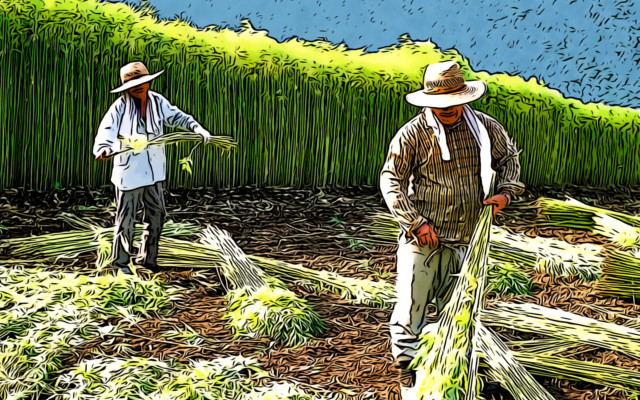Hemp
Industrial, superfood for nutritionists
and crop to be enhanced in Italy, according to the Ministry of Agriculture. The recent technical advisory opinion of the
Superior Health Council
however, introduced some misunderstandings, derailed into widespread misinformation.
Industrial hemp, the rules in Italy and their implementation
The Ministry of Health-according to Law 242/16, on the hemp agro-industrial supply chain-should have adopted within 6 months the maximum THC limits to be allowed in foods containing hemp. Referring in each case only to products derived from cannabis sativa varieties admitted to the Single Community List.
The Superior Institute of Health (ISS). has always been the reference authority in Italy to refer to for scientific risk assessment in the food chain. Again therefore, the Ministry of Health should have turned to the ISS for toxicological analysis of products derived from industrial hemp. And the subsequent establishment of THC thresholds in foods that do not preclude their safe consumption. For the best protection of public health.
Industrial hemp, the opinion of the Superior Health Council
The Superior Health Council (HSC), it should be noted, is a body that assists the Ministry of Health in assessing any risks associated with food or other consumer products. Its opinions have no legal value, as they precisely merely offer support to the risk assessment and management activities incumbent on the Central Health Administration.
In relation to hemp, the Superior Health Council has been asked by the Ministry of Health to issue an urgent opinion. In the face of a regulatory vacuum that has caused and is still causing uncertainty among supply chain operators, from farm to fork.
In its opinion 10.4.18, the HSC merely recalled the following:
– the need to establish long-requested limits (THC on hemp and its parts or foods) as soon as possible,
– The indeterminacy of risk (‘no risks can be excluded…’). Having regard to ways of consuming hemp sativa inflorescences beyond, among other things, their use for food purposes.
The reading of the HSC’s opinion by news organizations thus lent itself, inevitably, to undue encroachment. Outside the scope of the legislation to be implemented.
Industrial hemp for food use, misunderstandings and risks to the Italian food supply chain
Italian food chain operators, following the publication of the Consiglio Superiore di Sanità’s opinion, have tried in vain to shed light on the matter.
The question, of science and law
, does not in fact pertain to any possible use of the inflorescences of
cannabis
. Rather, simply, to the THC limits to be set for the safe consumption of foods containing hemp sativa and/or its derivatives. Such as seeds, oil, flour. As well as the inflorescences, for use in herbal teas only.
The misunderstanding induced by misinformation about the SSC opinion, moreover, risks damaging the Italian hemp supply chain compared to that produced or imported in other EU member states. Because under the principle of ‘mutual recognition,’ Italy cannot inhibit the trade of foods with hemp legally made in other EU countries.
The real risk, therefore, is to disfavor the production of food derived from ‘Made in Italy‘ hemp, to the exclusive benefit of imported products. (1) Thus inflorescences-which in the view of CSS would not be saleable in Italy (2)-are freely marketed in the Internal Market.
Industrial hemp, recommendations to operators
The Superior Health Council has reported commercial activities ‘outside any possibility of monitoring and control of the quantity actually taken and therefore of the psychotropic effects it may produce…’
It is therefore recommended-those who intend to sell hemp or its parts for ornamental purposes, or for research purposes (3)-consider introducing appropriate warnings, aimed at preventing its misuse. Such as, ‘forbidden for children under 18‘, ‘keep out of reach of children, pregnant or lactating women‘, ‘non-food use‘, ‘not intended for burning‘, etc.
At the same time, it is necessary to adopt every suitable procedure to ensure strict compliance with the THC limits stipulated in plants (0.2%) .
Dario Dongo
Notes
(1) The invocation of controls to prevent the free sale of Cannabis Sativa light is itself without any legal basis. Beyond the due application of the Consolidated Narcotics Act (Law 309/90) on varieties of plants with psychotropic action, which, moreover, are expressly excluded from the scope of Law 242/16
(2) The law. 242/2016, on closer inspection, does not prohibit trade in inflorescences. The MIPAAF circular 22.5.18, in fact, seems to allow the sale of them
(3) Assumptions actually covered by Law 242/16. Permitted uses include the use of hemp (without distinction between parts) for crops dedicated to educational and demonstration activities, as well as research by public or private institutions. In addition to crops intended for floriculture.
Dario Dongo, lawyer and journalist, PhD in international food law, founder of WIISE (FARE - GIFT - Food Times) and Égalité.




